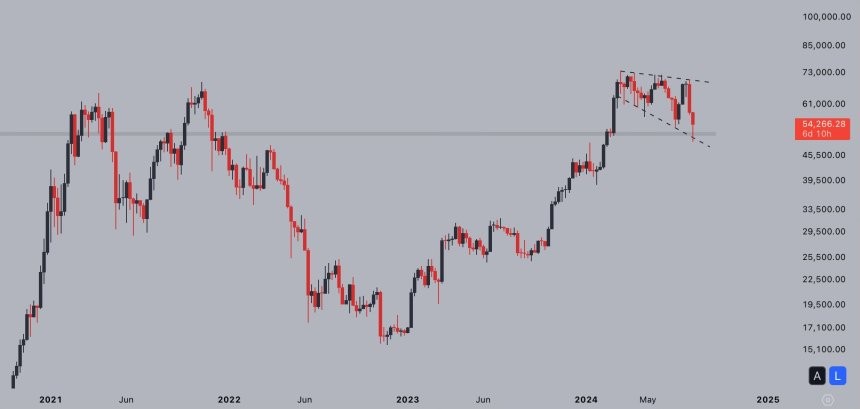
The cryptocurrency market experienced a massive $555 million liquidation event, pushing Bitcoin (BTC) below $100,000 and triggering widespread losses across major digital assets.
The liquidation wave, one of the largest in recent months, occurred when numerous leveraged trading positions were forcibly closed by exchanges due to insufficient margin coverage. Major platforms like Binance and Bitfinex saw a surge in liquidated positions, creating cascading effects throughout the market.
Bitcoin's price decline has impacted other cryptocurrencies, with XRP dropping over 10% to $2.56 in the past 24 hours. However, market sentiment remains notably optimistic - Bitcoin maintains 80% bullish sentiment while XRP shows 88% positive outlook according to CoinMarketCap data.
Despite the sharp downturn, institutional interest continues to grow. MicroStrategy recently announced plans to raise $563.4 million through a stock offering, demonstrating sustained confidence in Bitcoin's long-term prospects.
Market analysts, including veteran trader Peter Brandt, emphasize focusing on risk management rather than panic selling. On-chain analytics firm Glassnode reports multiple indicators suggesting Bitcoin's growth potential remains strong.
The crypto community's resilient response stems from:
- Strong market fundamentals and increasing institutional adoption
- Historical patterns of recovery from previous downturns
- Growing mainstream acceptance of digital assets
- Long-term investment strategies viewing dips as buying opportunities
While the liquidation event highlights crypto's inherent volatility, many investors maintain conviction in the market's underlying strength and future potential. Successful navigation of the current landscape may require reassessing investment timeframes, diversifying holdings, and staying informed about industry developments.
The market's ability to maintain predominantly bullish sentiment even during major liquidation events suggests growing maturity in how participants view short-term volatility within their longer-term investment outlook.